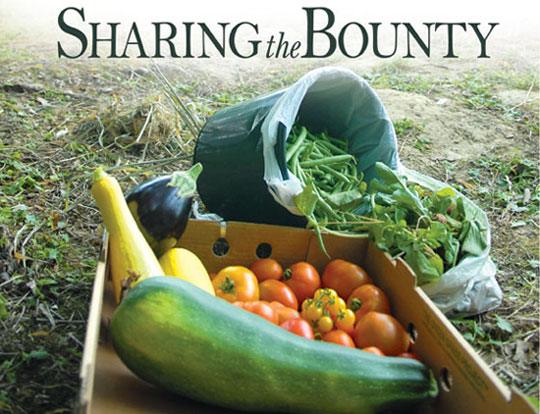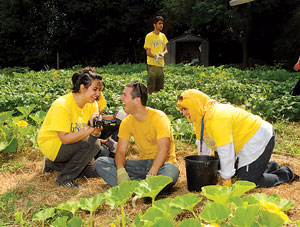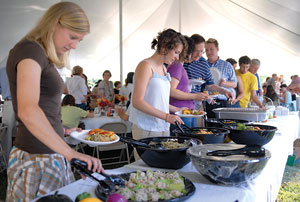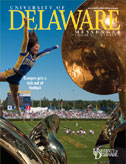
A few years ago, the College of Agriculture and Natural Resources found itself with a plot of land and no immediate need for it, since the researchers who had been studying weeds there had finished their work.
Some graduate students—motivated by a need to save money, a desire for fresh produce and, for many who are attending UD from other countries, a yearningfor favorite foods that were hard to come by in American supermarkets—started a community garden. When those students moved on or ran out of time to tend the garden, college administrators began looking for a productive way to use the tird of an acre near Townsend Hall.
This summer, they found it, and in a big way.

Over the course of the growing season, the renamed Garden for the Community produced some 2 tons of fresh vegetables and fruits, all of which were donated to the Food Bank of Delaware to help families in need. The garden, a partnership of the college, the Master Gardeners program, the state Department of Agriculture and others in the community, relied on volunteers ranging from novices to expert home gardeners, schoolchildren to senior citizens.
Alyssa Collins, AG ’06PhD, a postdoctoral researcher in plant pathology who coordinated the garden project, says surplus from the former graduate student garden always was donated to the Food Bank. But this year, she says, Tom Sims, associate dean of the college, proposed dedicating the garden’s full production to the nonprofit that supplies food to those in need.

“We decided this was a much more efficient way to help address hunger in Delaware,” Collins says. From spring planting to the end of harvesting in the fall, she oversaw a contingent of volunteers from throughout the University and the community, who benefited from the advice and assistance of the Master Gardeners program run by Cooperative Extension.
The 15,000-square-foot plot was planted in tomatoes, peppers, beans, okra, pumpkins and squash, among other crops. In addition to the many donated plants, some “volunteer” tomatoes and watermelons sprouted on their own. Those were holdovers from previous years, Collins says, adding, “This garden is full of volunteers—plants and people.”
The Food Bank, which traditionally relies on donations of canned goods and other nonperishable items, welcomed the addition of more homegrown produce to distribute.
“Fresh food is natural and nutritious,” Collins says. “We think that’s especially important for children, and we understand that 30 percent of the Food Bank’s clients are children.”
University students who volunteered in the garden came from a variety of colleges and programs. Elizabeth Kelley, who was out weeding between the rows of fledgling plants one hot July Saturday, calls the work “a nice change of pace” from her chemical engineering doctoral studies. “It’s neat to plant something and then come back and see it growing,” she said during a break that day. “And it’s for such a good cause.”
When the garden initially was planned this year, organizers hoped to be able to donate 3,000 pounds of produce. By the time a celebratory “Evening in the Garden” fundraiser was held in mid-August, netting about $4,000 for the Food Bank, the amount of donated produce had topped 3,275 pounds, with more to come during the rest of summer and into the fall.
Overall, Sims says, the Garden for the Community “represents the core mission of the College of Agriculture and Natural Resources—helping to feed the world in a sustainable manner.”





